Submitted by Berrin Chatzi Chousein
’’Burning Man’’ presents Black Rock City 2015 Art Installations
United States Architecture News - Sep 11, 2015 - 12:36 12762 views
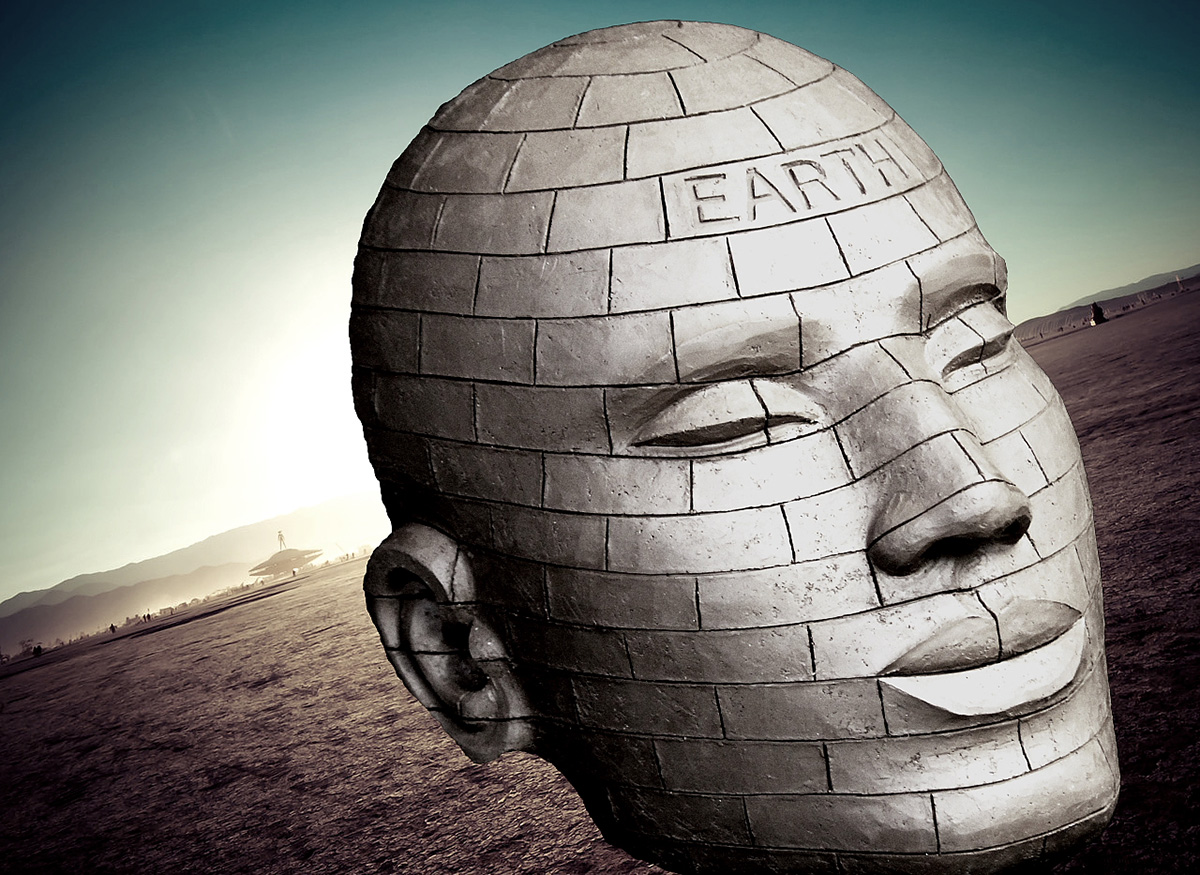
''brickhead earth'' designed by James Tyler, NY, installed in Burnin Man 2015 Festival.
all images © Burning Man Festival
''Burning Man'' Festival is held once a year, tens of thousands of people gather in Nevada’s Black Rock Desert to create Black Rock City, a temporary metropolis dedicated to community, art, self-expression, and self-reliance. In this crucible of creativity, all new installations are placed and fired by designers at the end of the festival. Burning Man 2015 took place August 30 – September 7, 2015 in the Black Rock Desert of Nevada. Participants joined in the effort to co-create Black Rock City, a temporary metropolis dedicated to art and community. Burning Man isn't your usual festival. It's a vibrant participatory metropolis generated by its citizens. 2015's art theme was ''Carnival of Mirrors''- and many different, interesting designs were installed into desert that created considerable attention to the art and construction.

Arbour: Joshua Haywood, Surbiton, England
''Arbour'' emerged from the study of geometry in sacred architecture, this artwork has been inspired by the dendritic forms of medieval vaulting. Medieval architects used the arched geometry of ribs and vaulted ceilings to achieve a soaring lightness and elevate the spirit; the architecture had a spiritual function.

Haywood has digitized these geometries and manipulated them in parametric models to design a contemporary structure that achieves the same objective. The Arbour celebrates life through geometry, which underlies the structure of so many life-forms. The Arbour’s soaring ribs draw our gaze heavenwards and inspire us to reach for the stars.

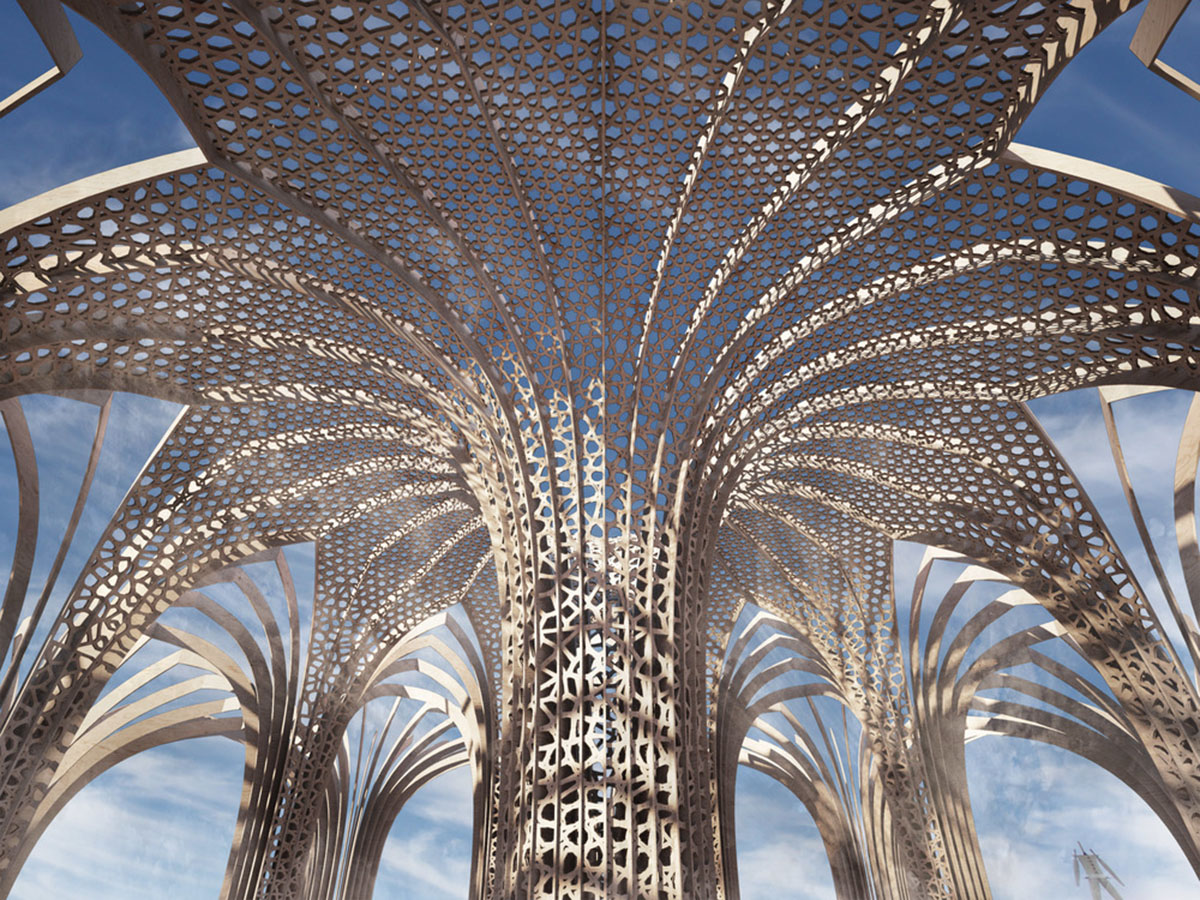


Bannerline Project: Rex Norman aka Killbuck, Carson City, NV
Welcome to the Coney Island of the MInd! Surrounding the Funhouse Maze structure this year, is an interpretation of traditional sideshow banners from the 1930s to the 1950s. Often hawking the lurid, morbid or the taboo, banners lured the carnival “peeps” to spend their nickles to see the forbidden exhibits “on the inside”. Billed as “alive!- shocking!- amazing!”- and brightly colored, sideshow banners were the alluring bait that made the sideshow a fixture of the carnival culture for more than a century. In recent years, sideshow art has gone from being nearly forgotten, to being recognized as a uniquely American cultural art form.


installation view from Burning Man Festival
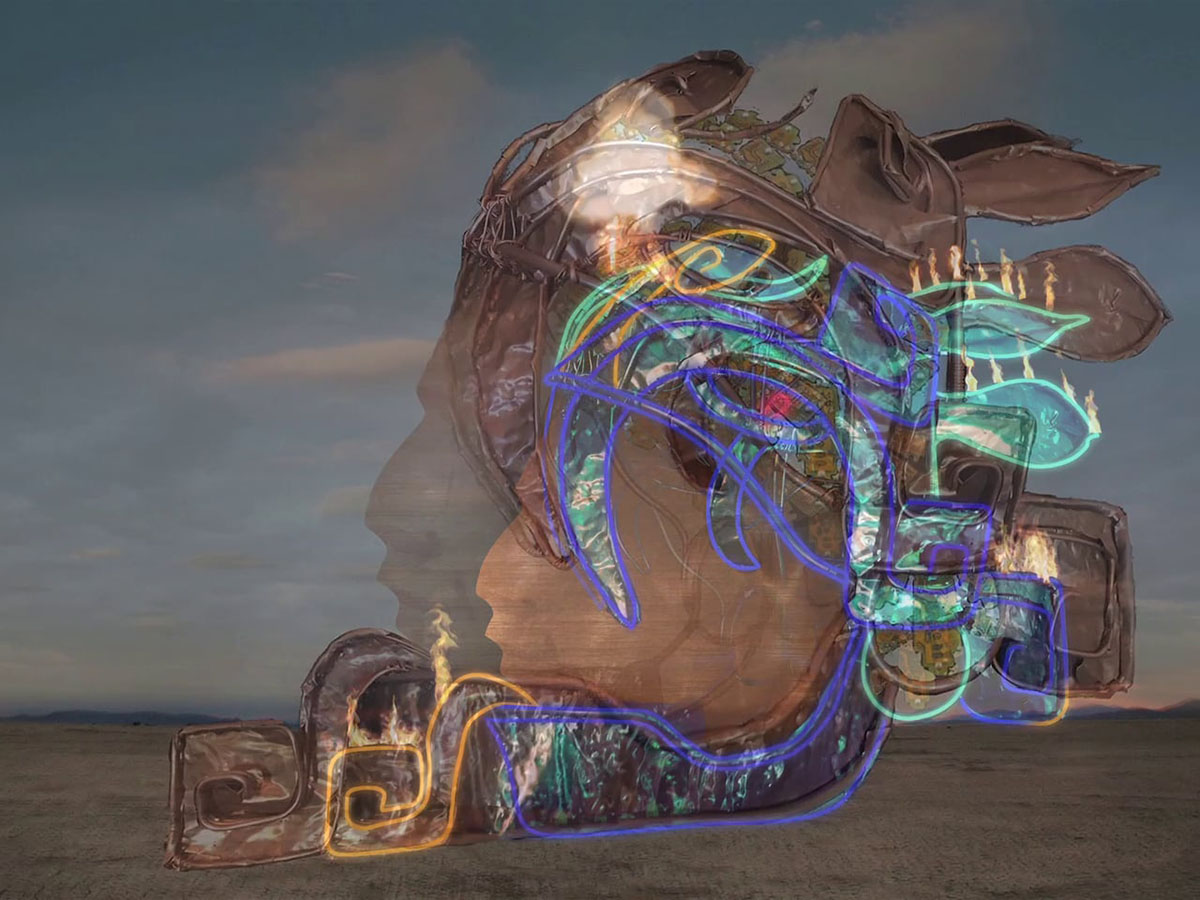
Axayacoatl: Capra J'neva, Firebulb, South San Francisco, CA
Axayacoatl (pronounced: ah-shy-ah-co-ah-tul, meaning: serpent mask) is a 20’ tall, 13’ wide copper effigy of Quetzalcoatl’s mask with a translucent copper screen warrior in his mouth. Flame effects and interactive LED lighting allow participants “behind the curtain” to put on an impressive display to those approaching. Large physical levers and wheels form the interface for participants who want to play “wizard” to those approaching the mask. Participants may climb his stair stepped tongue, enter the room created by the swallowed warrior’s head and look out through his eyes.


Be the Menagerie: Michael Coy, Sebastapol, CA
Be the Menagerie is a common interactive carnival amusement extraordinarily done. A Tintamarresque for photo ops, the creatures to be inhabited are imagined from various epochs and contextual sources—mytho-mechanical beasts for instance—set in surreal environments and painted in neo-medieval style.
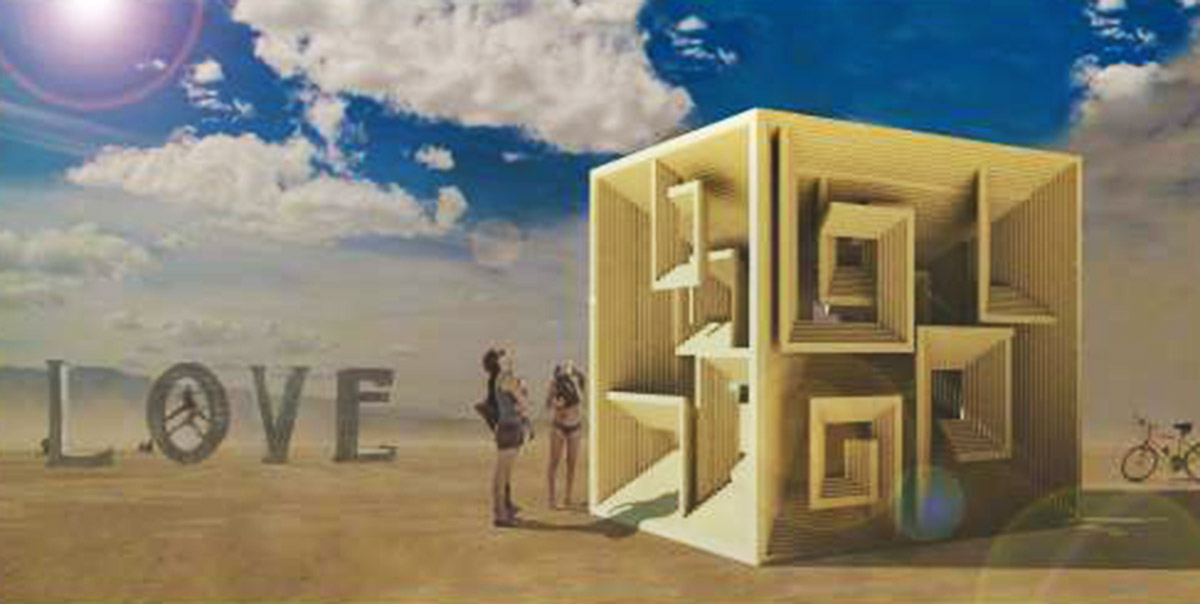
Bismuth Bivouac: Jonathan Leung, WeWantToLearn.net, London, England
Inspired by the geometry from the crystalline growth pattern of the element Bismuth, the Bismuth Bivouac is a playful pavilion celebrating the orthogonal geometries that exist in natural Bismuth crystals to form an intriguing cubic structure, with spiralling disruptions on each face, governed by the golden ratio. From a distance, it appears as a solid cube but intricate spaces can be discovered when you get closer. The iridescent colours of crystal translate into the proposal through coloured LED, built into the lumber structure, so at night the pavilion gives the same visually mesmerizing, colourful effect of the crystals in nature.


Brickhead Earth: James Tyler, Haverstraw, NY
Colossal ceramic brick human head reminiscent of the temple carvings of Angkor Wat or the great Olmec heads of Central America, a contemporary relic of a civilization not yet past. Site specific sound and light elements will be incorporated into the artwork.

James Tyler’s Brickhead installations are unique colossal heads that invite us to identify with the world’s ceramic heritages. They bring today’s faces together with pre-Columbian, South American, Native American, Asian, African, and Western influences. Gallery Director Mark Ruschman noted, “There is something timeless in Tyler’s Brickhead sculptures, reminiscent perhaps of the temple carvings of Angkor Wat or the great Toltec heads of Central America.

Yet they are clearly contemporary, relics of a civilization not yet past…The ponderous weight of the brick constructions is juxtaposed with the ethereal nature of time.” At the same, the heads are stylized portraits of everyman and everywoman. They are unique yet universal. They are us.
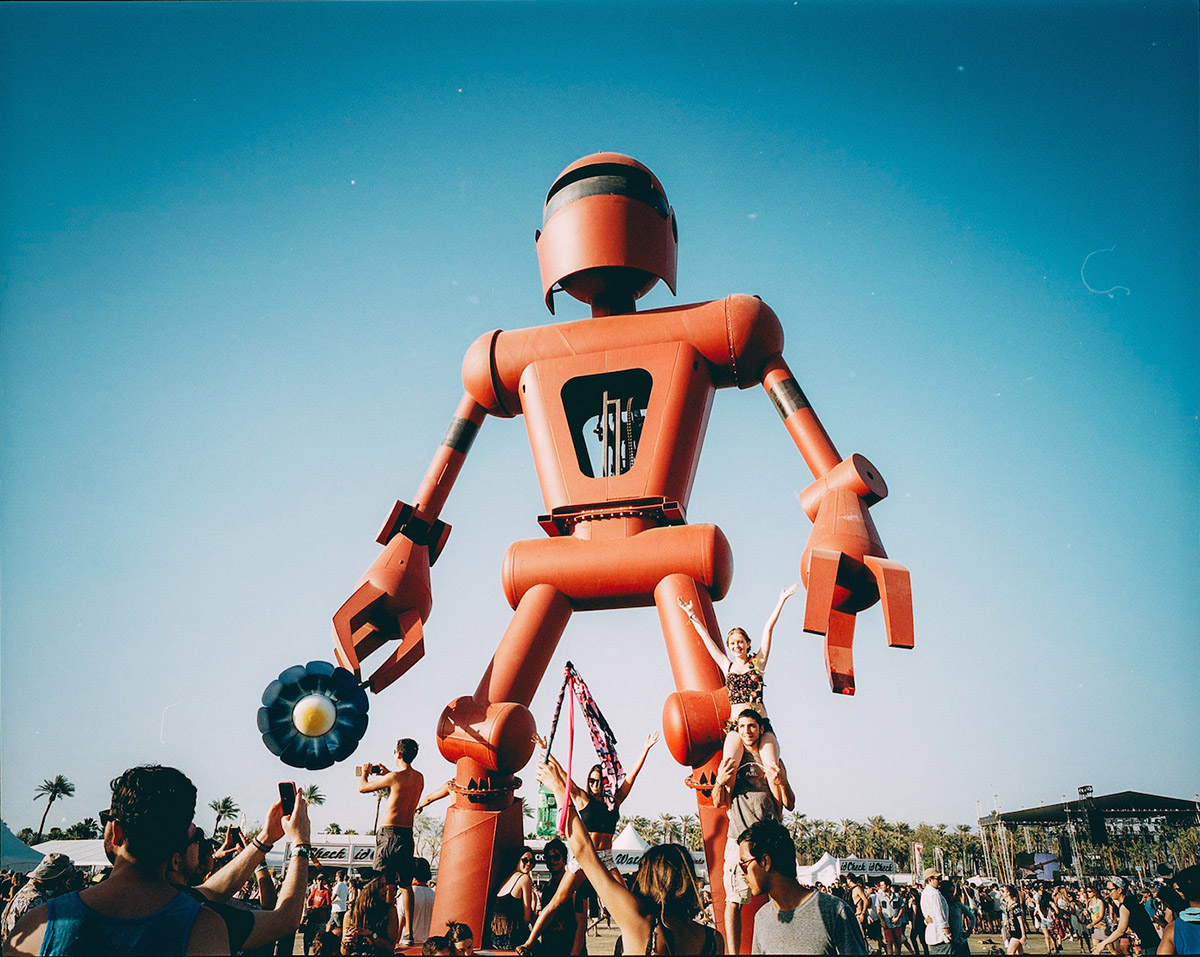
Becoming Human: Christian Ristow, El Prado, NM, photo via Coachella Valley Music and Art Festival.
Becoming Human is a 30-foot tall sculpture of a robot, which occasionally smells the flower in its right hand. The sculpture hopes to inspire viewers to ask questions about technology and nature, and the value of slowing down.

Black Rock Observatory: Gregg Fleishman, Tom Varden, Scott Parenteau and the Desert Wizards of Mars, Lancaster, CA
Black Rock Observatory is a mobile astronomical observatory dedicated to the celebration of the nexus between art and science. Showing the universe as art is an admission that the truth is sufficiently beautiful and that it deserves our attention. A tourist office for the rest of the universe; a series of wooden domes derived from the Small Rhombicuboctahedron and designed by architect Gregg Fleishman, where the secrets of the universe are revealed by powerful mirrors, optics, experiments, art, performances and interactive exhibits.

The sphere is the universe’s answer to the form problem. Orbs above; orbs below. Echoes of the outer planets, the domes lie in a remote space requiring skills, effort and patience to reach. Eyeballs and color coded lasers fondle the planets overhead while ‘zards, ‘nauts and ‘bots conduct experiments below.
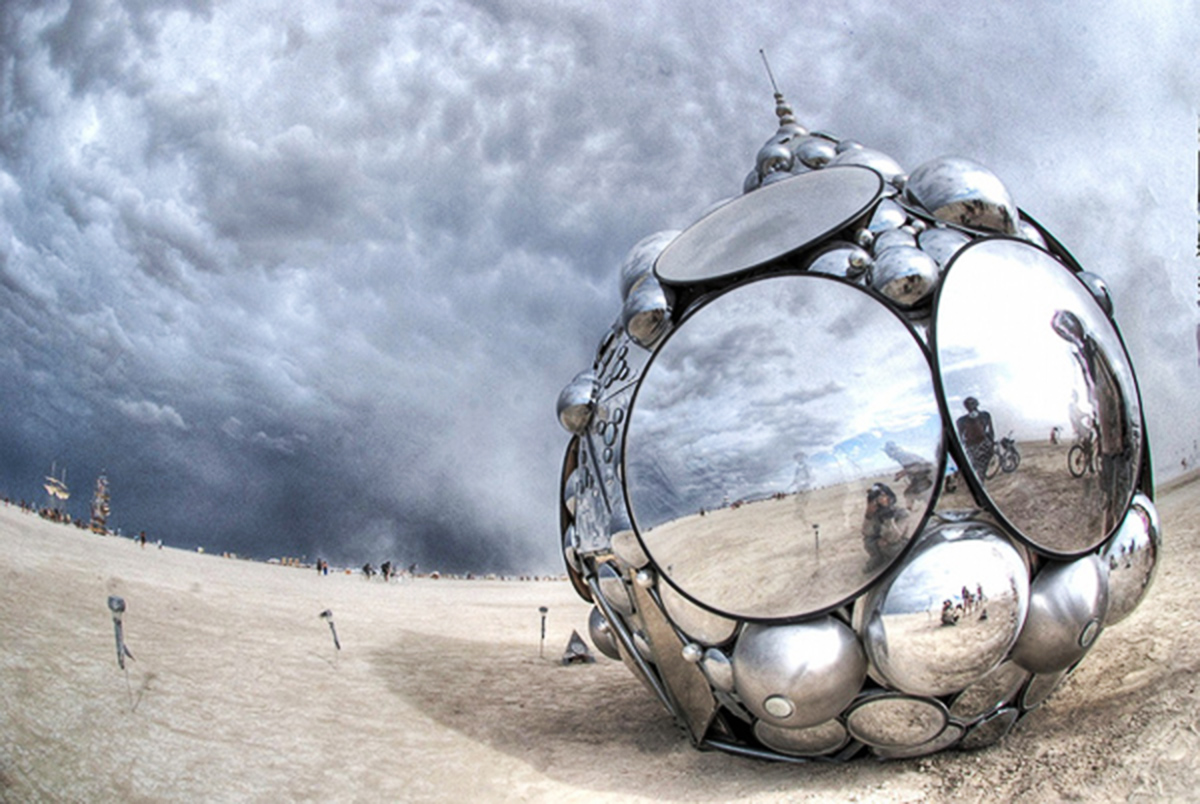
Compound ''I”: Kirsten Berg, Newark, CA
Compound ''I” glistens like a totemic pillar of eyeballs as light undulates over its multifaceted orbs. Mirrored spheres, surfaced with lens-like convex mirrors, stack one atop the other to a height of 18’, referencing compound eyes of insects, forms of Buddha heads and the Mandelbrot fractal at once.
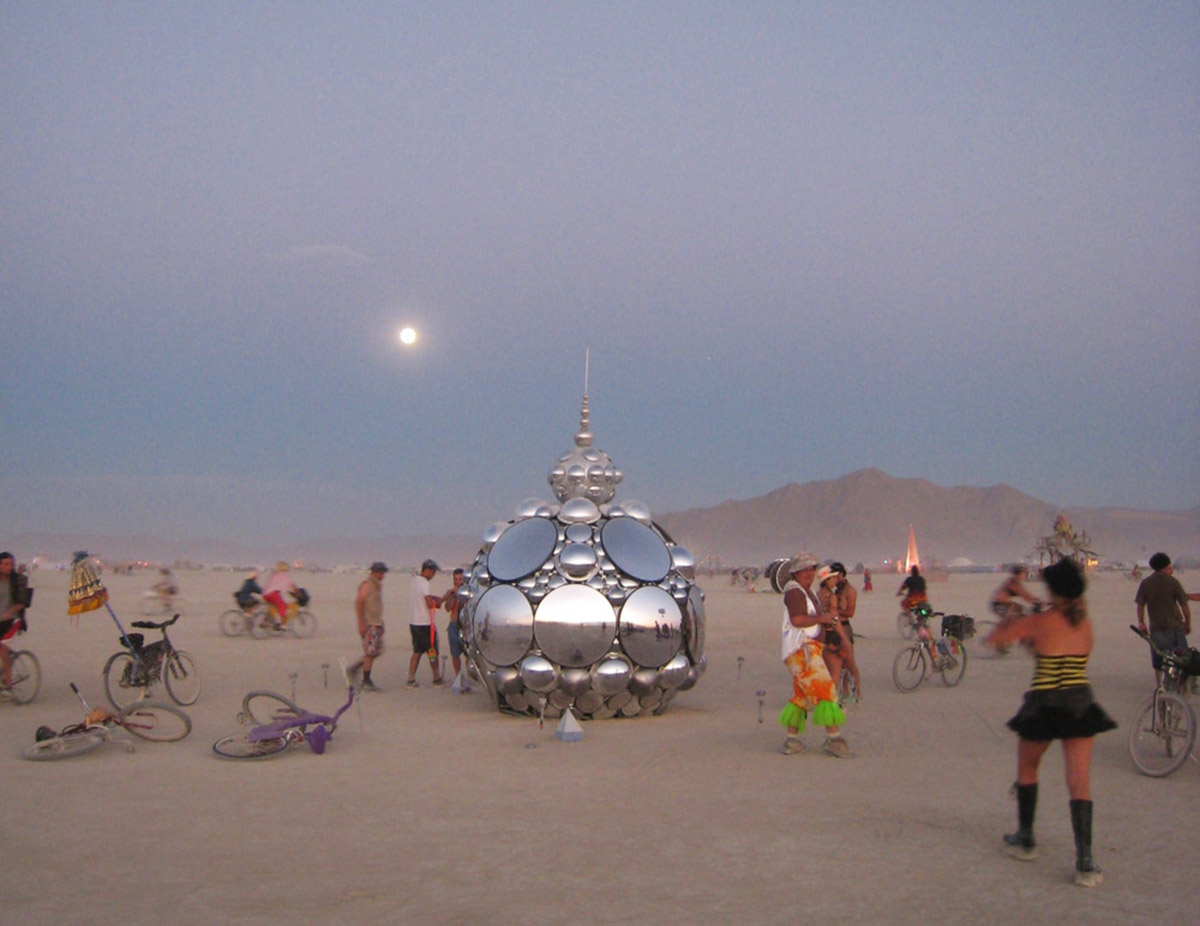
Circling around “Compound I”, reflected light follows us…as if we are being watched. Looking into the shifting centers of the glistening lenses, we meet our own gaze. As we realize it is our own sight and form that animates these pupils, our sense of separate-ness from the art is challenged.Stepping away, we see our image simultaneously contract/overlap with everyone else’ onto the mosaic globes before us- a composite of shared reflection. The eye as instrument of reflection and the ‘I’ as object of reflection; boundaries blur between perspectives of inner and outer, personal and collective, to convey a picture of interconnectedness, with us as facets of a compound ” I “.

Please see other Burning Man 2015 installations from here.
> via burningman.org
